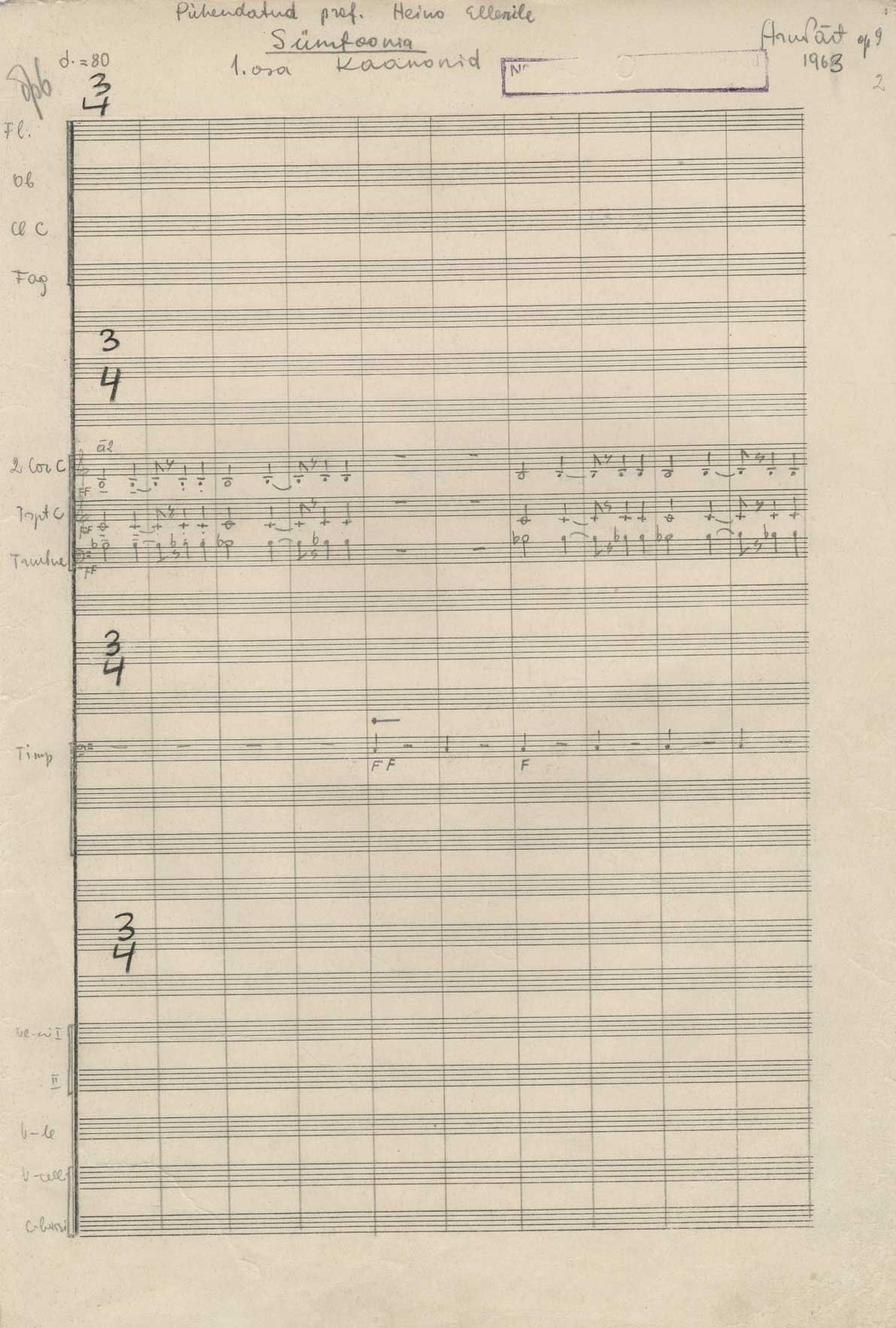Symphony No. 1 was completed in 1963 after graduating the Tallinn Conservatory and is dedicated to Heino Eller, Arvo Pärt’s composition professor. The symphony continues the direction of Nekrolog (1960), Pärt’s first orchestral composition and the very first piece in Estonian music to use the dodecaphonic technique. The symphony also has common traits with the first sound mass work in Estonian music, Perpetuum mobile, which was composed in the same year.
The title of the symphony, Polyphonic, as well as the titles of the two movements – Canons and Prelude and Fugue – refer to contrapuntal texture and the forms of classical polyphony. The constructive basis of the symphony is the dodecaphonic note row, which is strictly adhered to. P…
Symphony No. 1 was completed in 1963 after graduating the Tallinn Conservatory and is dedicated to Heino Eller, Arvo Pärt’s composition professor. The symphony continues the direction of Nekrolog (1960), Pärt’s first orchestral composition and the very first piece in Estonian music to use the dodecaphonic technique. The symphony also has common traits with the first sound mass work in Estonian music, Perpetuum mobile, which was composed in the same year.
The title of the symphony, Polyphonic, as well as the titles of the two movements – Canons and Prelude and Fugue – refer to contrapuntal texture and the forms of classical polyphony. The constructive basis of the symphony is the dodecaphonic note row, which is strictly adhered to. Pärt has used the same note row in mirror form, also in Perpetuum mobile, but starting it a tritone higher. In the culmination passages of the symphony, he has used the means of a sound mass, e.g. clusters. The canons in the first movement run in waves, rising highest toward the end. A beautiful violin solo in the beginning of the Prelude seems to play the role of a slow middle movement. The main culmination of the entire composition is formed in the Fugue by a single energised dynamic ascent.
Symphony No. 1 premiered on 7 February 1964, performed by the Estonian Radio Symphony Orchestra (currently Estonian National Symphony Orchestra), conducted by Neeme Järvi.


